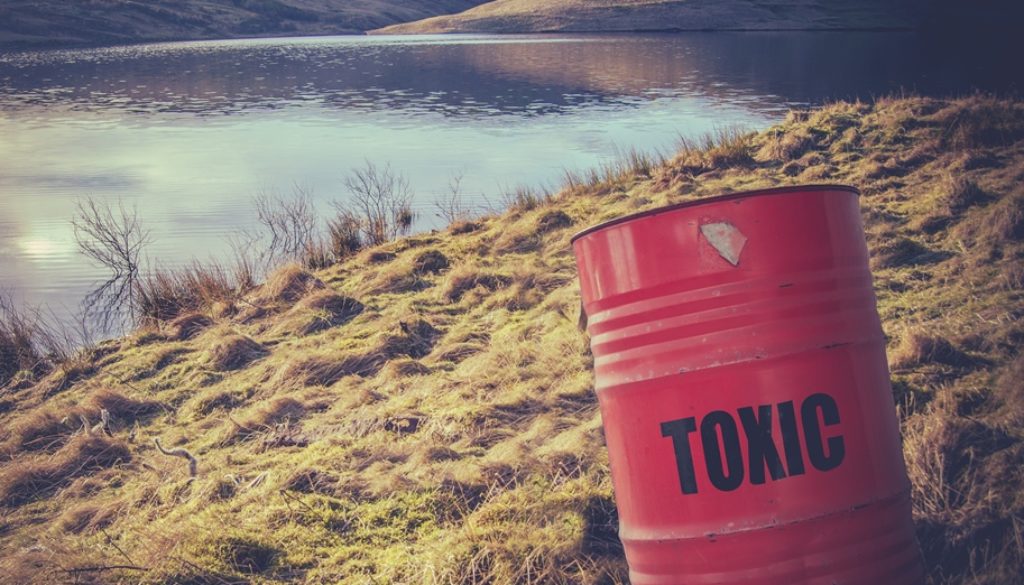Pruitt: Thousands of Toxic Spills? No Problem.
By Erik Olson and Daniel Rosenberg, Natural Resources Defense Council
On June 19, Scott Pruitt’s EPA announced that even though the Clean Water Act explicitly requires the agency to establish rules to prevent and address hazardous substance spills from industrial facilities, and even though EPA agreed with NRDC and our partners to a court-approved Consent Decree requiring the agency to issue a notice of proposed rulemaking no later than June 16, 2018, that they would not issue such rules.
Buried in EPA’s announcement that it wouldn’t act, EPA conceded that from 2007 to 2016, there were “9,416 reports” of Clean Water Act-defined Hazardous Substance discharges, and “3,140 reports that were reported to have reached water.” That means a lot of toxic chemical pollution of America’s lakes, streams and drinking water sources, placing many people and communities at risk.
The agency also admits that these figures may understate the number of these discharges, in part because they are self-reported by this industry. Furthermore, there are undoubtedly many additional spills of toxic chemicals not included on EPA’s nearly four decade-old list of about 300 “hazardous substances.” Many toxic chemicals not included on that list still are dangerous. For example, one of the primary spilled chemicals that contaminated the drinking water supply of over 300,000 people in Charleston, West Virginia in 2014, 4-methylcyclohexanemethanol (MCHM), is not a designated hazardous substance. Yet MCHM and other chemicals mixed in with it in the leaking tank can present worrisome health risks. EPA also needs to update its hazardous substance list.
The industrial facilities often responsible for those spills are disproportionately in low-income communities and communities of color. Our colleagues at the Environmental Justice Health Alliance (EJHA) documented the disproportionate risk of catastrophic chemical releases faced by communities of color and low-income communities from 3,433 industrial facilities across the country in its 2014 report, Who’s in Danger: A Demographic Analysis of Chemical Disaster Vulnerability Zones.
Concerned about these risks, the EJHA, People Concerned About Chemical Safety and NRDC sued the EPA in July 2015, alleging that the agency had failed to issue rules that would help prevent and address these types of spills. We settled that case in February, 2016, with EPA agreeing to issue a “notice of proposed rulemaking pertaining to the issuance of the Hazardous Substance Regulations” no later than June 2018, and to take final action by October, 2019.
Pruitt’s contempt for the law, public health and the environment, and his utter lack of interest in the facts were made clear as he took on the issue of hazardous substance spills. Our settlement with EPA explicitly gave the agency 10 extra months to issue an “Information Collection Rule” to collect data on the impacts of spills and the facilities storing these toxic chemicals that the agency insisted it needed to issue to complete the rulemaking. The agency initially proposed to collect these data in September, 2017 in a “Survey on Clean Water Act Hazardous Substances and Spill Impacts.” But in the face of strong opposition from the petrochemical and other industries, EPA never finalized that proposal and never collected those data.
Instead, Pruitt made his decision not to issue hazardous substance spill safeguards, without even bothering to collect the data the agency said it needed. (As recently as April of this year, EPA still was publicly saying that it was “developing a regulatory proposal regarding the prevention of CWA hazardous substance discharges,” and proposed a pared-down information collection rule that would be a “short voluntary survey” of states, tribes and territories asking them to share a limited amount of information on facilities, spills, and current programs).
Scott Pruitt’s unalloyed arrogance and refusal to follow the law and a court order suggests that EPA is becoming a wholly-owned subsidiary of the petrochemical and other industries. We and our colleagues are evaluating our legal options, because the health of millions of Americans downstream from facilities that will continue to spill toxic chemicals hundreds of times every year is at risk.

